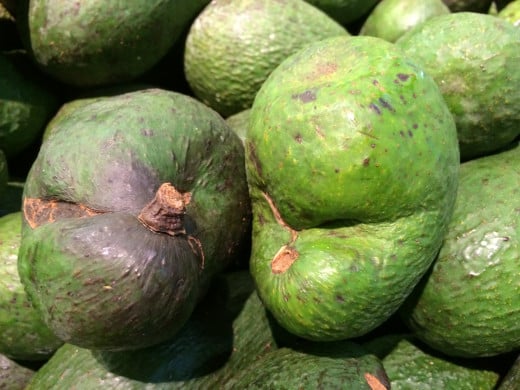The Role of Boron in Healthy Fruit Formation

Boron (Atomic number 5 and symbol B on the periodic table) is found in most soils around the world in non-ionic form as boric acid B(OH)3. Boric acid is naturally released into the soil during the decomposition of organic material containing it, the rate of which is greatly effected by the make up of soil microbes, as well as during boron-containing rock decomposition and weathering.
Because it is non-ionic, boric acid is one of the most leachable nutrients found in soils. Boric acid is not attracted to soil colloids (such as clay particles to which other ionic-charged nutrients can attach to) and can be easily leached through the soil by heavy rainfalls which can lead to boron deficiency in plants. Because water drains through lightly textured soil (such as sandy loams) faster than heavily textured soil (such as clay loams), lighter textured soils are more at risk of being deficient in boron.
The flip side to this is that for heavy soils in low-rainfalls regions (where there is little rainfall to leach the boron away) boron can sometimes accumulate to levels that are actually toxic to plants when rains does fall (as nutrients need to be in aqueous form for effective plant uptake). Once uptaken by the plant boron goes directly to any actively growing tissue in the plant and isn’t easily relocated from stores in existing tissues, because of the symptoms of boron deficiency show up as deformities in actively growing portions of the plant.
Boron deficiency often results in the production of malformed fruits with sunken areas, but symptoms can also manifest as the yellowing or dieback of growing tips, the formation of thickened, distorted, hollow, brittle and/or cracked stems, excess budding and shoot formation with a reduction in leaf size, shortening of inter-node distance, and bud and fruit drop depending on which part of the plant is actively in growth when the deficiency occurs. Care should be taken as some of these symptoms can be mistaken for deficiencies in other nutrients, in particular calcium deficiency as calcium like boron is also not easily relocated from existing tissues so deficiency similarly shows in the actively growing parts of the plant.

A boron deficiency at the wrong time can result in an entire crop of malformed fruit, greatly reducing its market price as customers have come to expect perfectly formed fruits on display at supermarkets. Customers may even think affected fruit contain caterpillars or other pests within the flesh of the fruit, an experience while biting into it that not many people would appreciate. Because boron deficiency can have such an economic impact for orchard growers some commonly recognised fruit disorders have been found to be a result of boron deficiency, one example of this is bumpy fruit disorder in papaya.
But deficiency isn’t the only possible problem caused by a imbalance in boron, toxicity can also be a problem. Mild boron toxicity will manifest as yellowing on the tips and edges of older leaves while a more severe boron toxicity will result in the leaf dieback starting at these yellow areas and then spreading across the entire leaf, eventually causing them to fall from the plant. There is a very small range in general between deficient and toxic levels of boron so care should always be taken when applying boron-containing fertilisers. Some commonly grown fruit and vegetables that can be susceptible to boron toxicity include grapes, peaches, legumes, strawberries and peaches so extra care should be taken not to over apply boron-containing fertilisers when growing these plants.
Laundry products comprised of Borax (Sodium borate) have been traditionally used to correct boron deficiencies and although these are relative cheap and easily available products and are able to be found at most supermarkets, an over-application can easily cause both boron toxicity as well as sodium toxicity.
The best way to prevent a boron deficiency is to apply a complete fertiliser or trace minerals containing boron as these will provide boron to the plant at an appropriate level balanced with other nutrients. Always following the rates specified on the packaging when applying any soil amendment. More frequent applications at lowers rates are always better than applying larger doses less frequently if you want to minimise the chances of applying a toxic or deficient level of any nutrient. Boron is certainly no exception due to the narrow range between deficient and toxic levels of this particular nutrient.






